The "What Not to Do" photos in my presentations invariably get a response from the audience. People groan or laugh as though only an idiot would do such things. Yet chances are, we've all done at least a few of these. In fact, much of the info that follows originated with mistakes I made myself.
These two dozen (and counting) what-not-to-do's are simple to avoid, but not always easy to remedy. A smart succulent owner learns beforehand what may be expensive or a hassle to fix, and cause prized plants to look dreadful or suffer ill health.
Note: My previous article, "A Dozen Beginners' Succulent Landscape Mistakes" has twelve more not included here.
Not anchoring potentially heavy plants
As you know, succulents by definition store moisture in their tissues to survive times of drought. A cactus the size of a beach ball can weigh hundreds of pounds. Yet such cacti tend to be shallow-rooted. Sometimes falling over helps succulents propagate by breaking apart (the pieces take root), but that's not the case with the barrel cactus shown above; it shouldn't have been planted in soft soil on a steep slope in the first place. [See examples of well-planted specimens: Why Your Garden Needs Golden Barrels.]
Letting aeoniums get leggy

When aeoniums turn into tall stems topped with small rosettes, it's time to prune and replant.
Aeoniums invariably get leggy over time. Cut off the tops, leaving an inch or two of stem, and throw the rest of the plant away, roots and all. Replant each rosette as a cutting: Insert it into the soil, so the stem can root and the rosette sits just above the ground. The best time to do this is in the fall, after the weather cools, when the plants emerge from summer dormancy. [See how in my video: "Prune and Replant Leggy Aeoniums."]
Watering succulents incorrectly
You probably thought my first what-not-to-do would be "overwatering." There's so much angst about watering succulents! Yet watering is one of the simplest things about succulents: Forget to do it and the plant will probably be fine.
That said, succulents do appreciate regular water, and will be healthier and happier if if given it. Water thoroughly, wait until dry or nearly, then repeat. When in doubt, don't water. [See: How to Water Succulents.]
Assuming pebbles create drainage
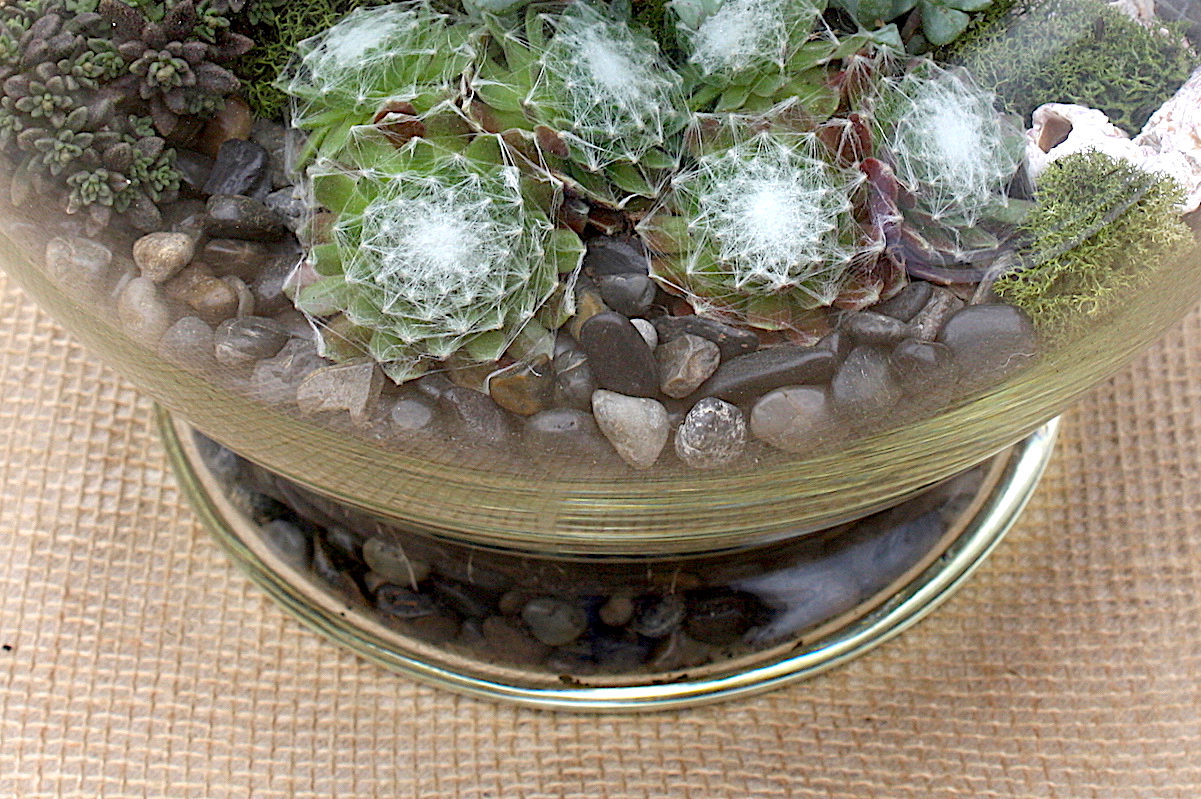
A layer of pebbles will NOT provide drainage
Does a layer of pebbles in a nondraining pot provide the drainage succulents famously need? No! In fact, just the opposite. A layer of pebbles traps stagnant water, creating a microbial soup that eventually rots plant roots. However, you CAN grow succulents in nondraining containers, providing you keep soil dry and water only enough to moisten the roots. [Learn more]
Planting a euphorbia where it'll need pruning
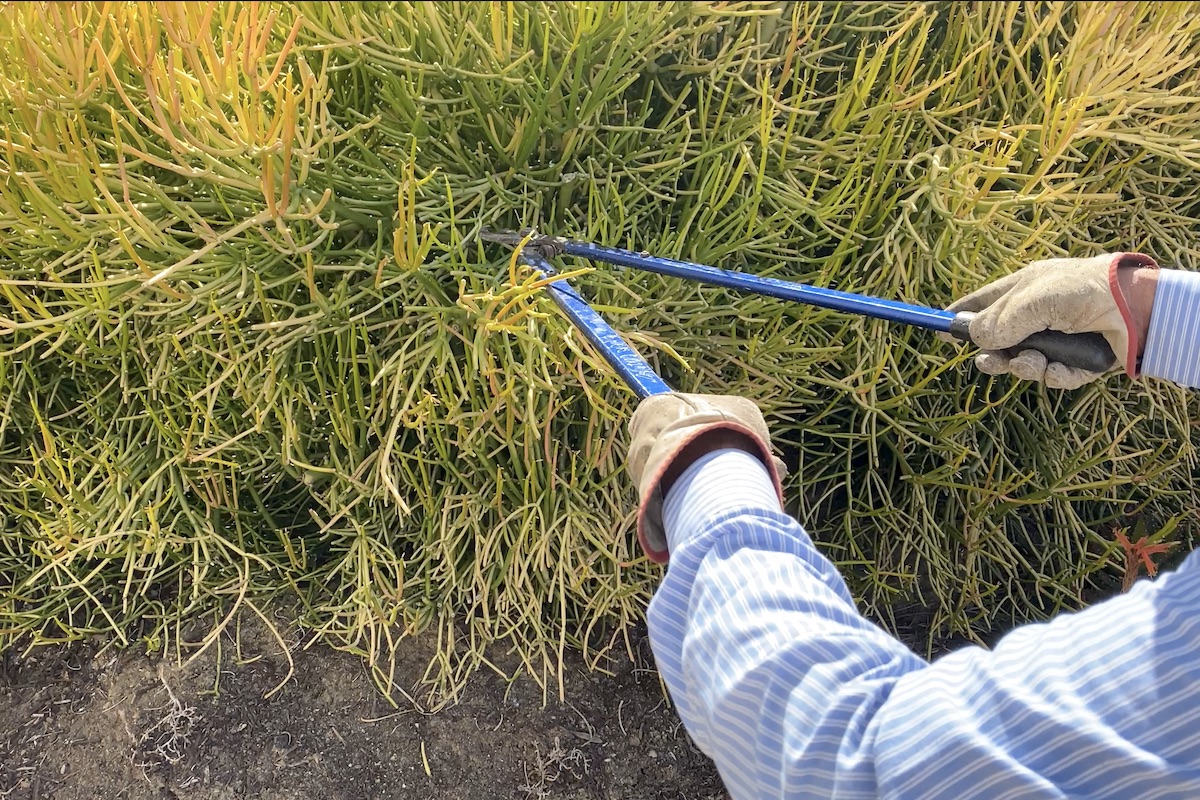
From my video on pruning euphorbias safely
Euphorbias, from Africa, are easy to grow in coastal areas of Southern California and Mexico where temperatures stay above 32 degrees. Over time, certain species, including popular Euphorbia tirucalli, get large. Euphorbia sap can cause irritation of the skin and is especially painful and dangerous to the eyes. Learn more and see a gallery of garden Euphorbias.
See my 6-min video: "How to Prune & Handle Euphorbia tirucalli 'Sticks on Fire'/Cómo podar y manipular árbol de los dedos"
Doing a dish garden of succulents with different needs
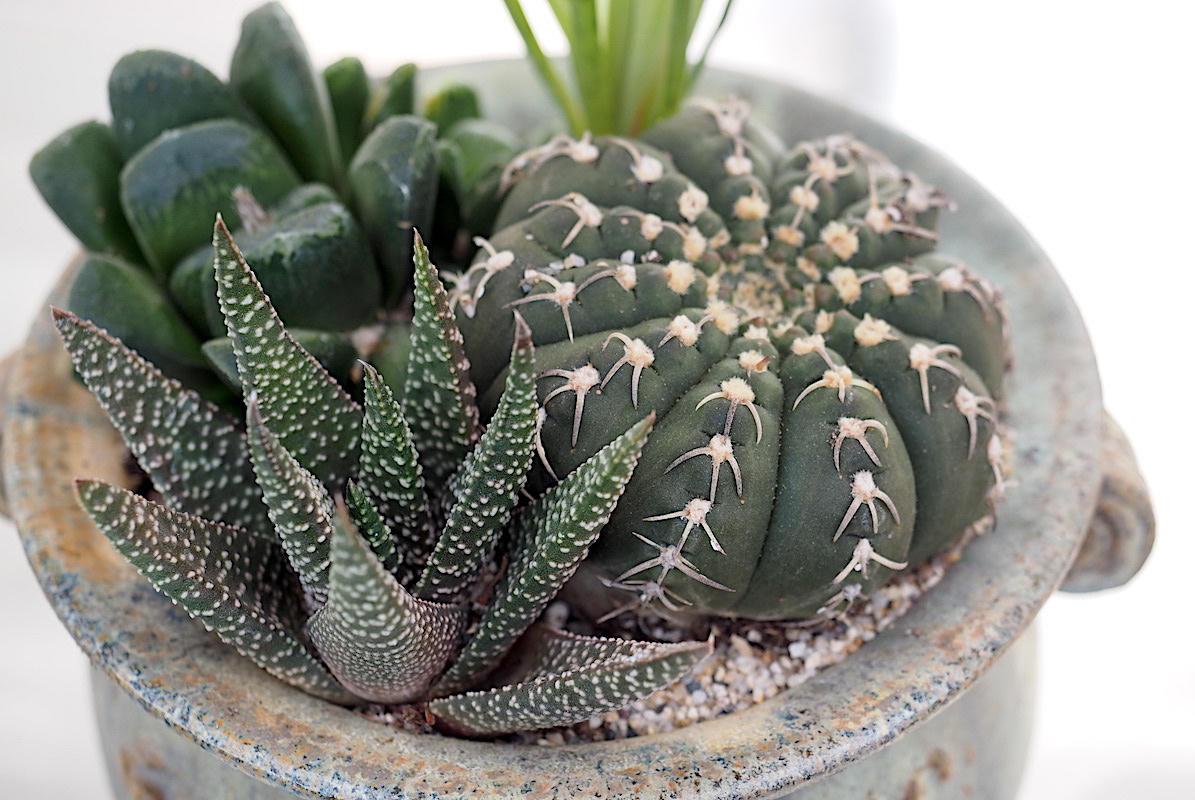
The cactus wants all the sun it can get; the haworthia and gasteria, bright shade only (they sunburn easily).
If you combine cacti in a pot with shade-loving succulents, you're making a temporary floral display; those plants want very different amounts of sun. Also, in general, keep in mind fat succulents want less water than thin-leaved ones. Such pairings may be pretty and appealing, but don't expect them to last.
Starting your collection with challenging succulents
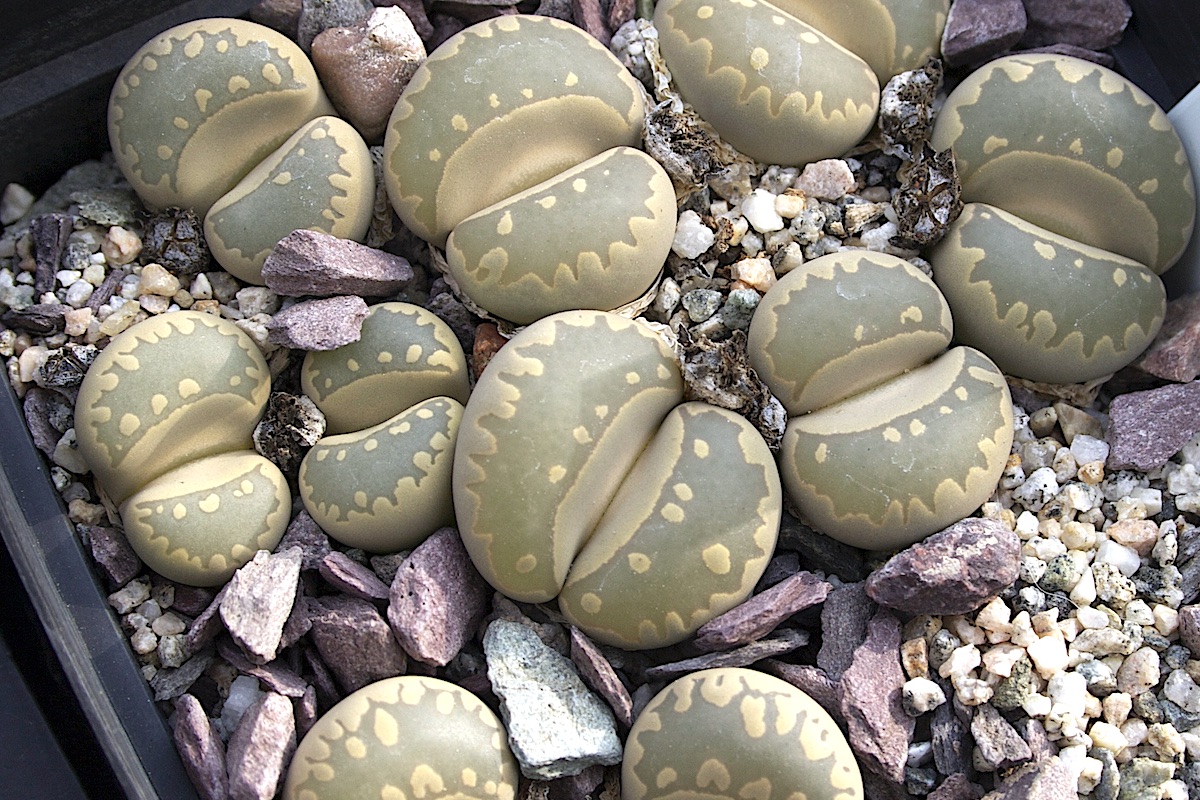
Lithops (living stones) can break a beginner's heart.
Succulents with personality are extremely appealing to owners who are nurturers, but such plants are challenging even for seasoned collectors. I'll never forget the trauma of having my baby toes (Fenestraria, a type of living stones) go squishy. I was 11, and yes, I overwatered them. Other desirable succulents that inevitably disappoint are moon cacti and spiral aloes.
Assuming dormant aeoniums are dead

Aeonium after winter rains (left) and during summer dormancy (right).
In southern and coastal CA, aeoniums thrive; the climate is similar to their native Canary Islands. Aeoniums go dormant during dry, hot summers, then perk up and grow during winter rains. So in March, aeoniums tend to be lush and vibrant like the one at left; in Sept. the same shrub (in full sun with minimal irrigation) looks nearly dead. It's not; it's fine. That's normal. Let it be. [Learn more about aeoniums.]
Not watering cactus in summer
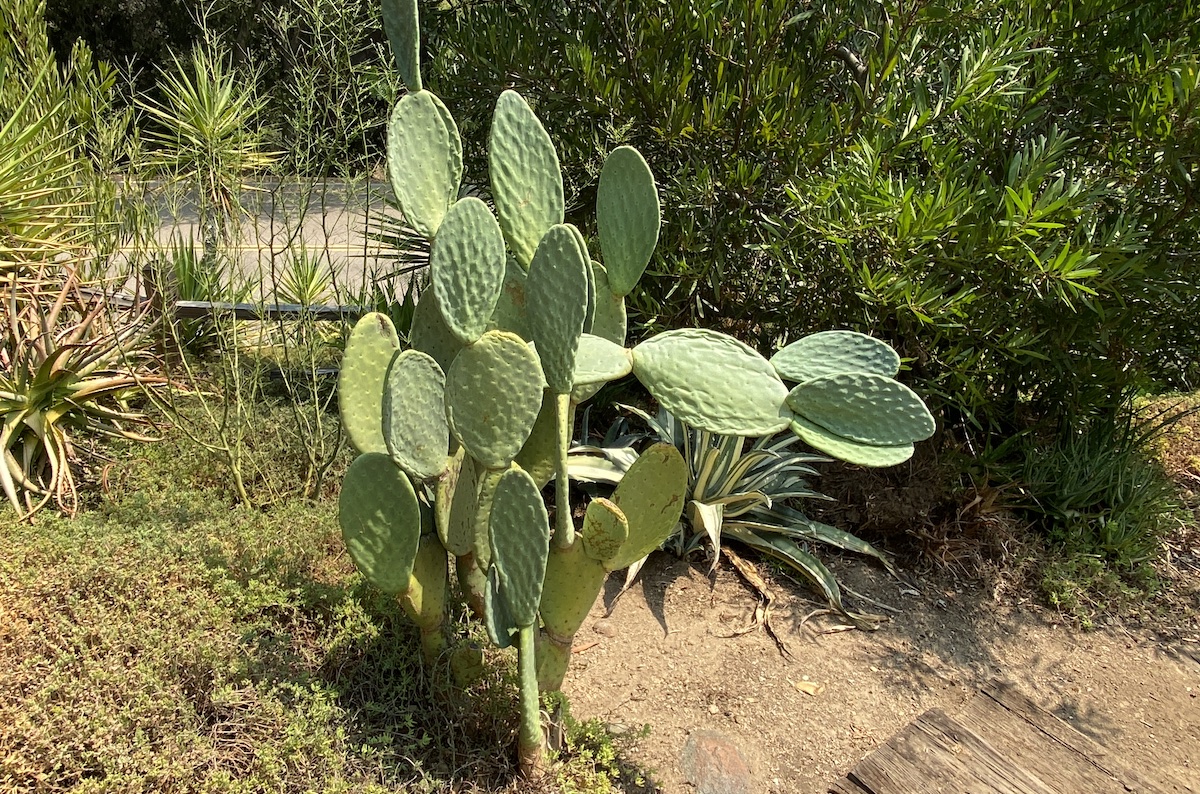
Drought-stressed opuntia
I assumed my paddle cactus (Opuntia sp.) needed no water other than rainfall. Imagine my surprise when a pad folded after six dry months, causing a top section to bend over horizontally. After I deep-watered the cactus, hydraulic pressure made it stand upright again. Would it have died without water? I doubt it. In fact, if the top pad had touched the ground, it may even have rooted!
Letting utilitarian objects stand out
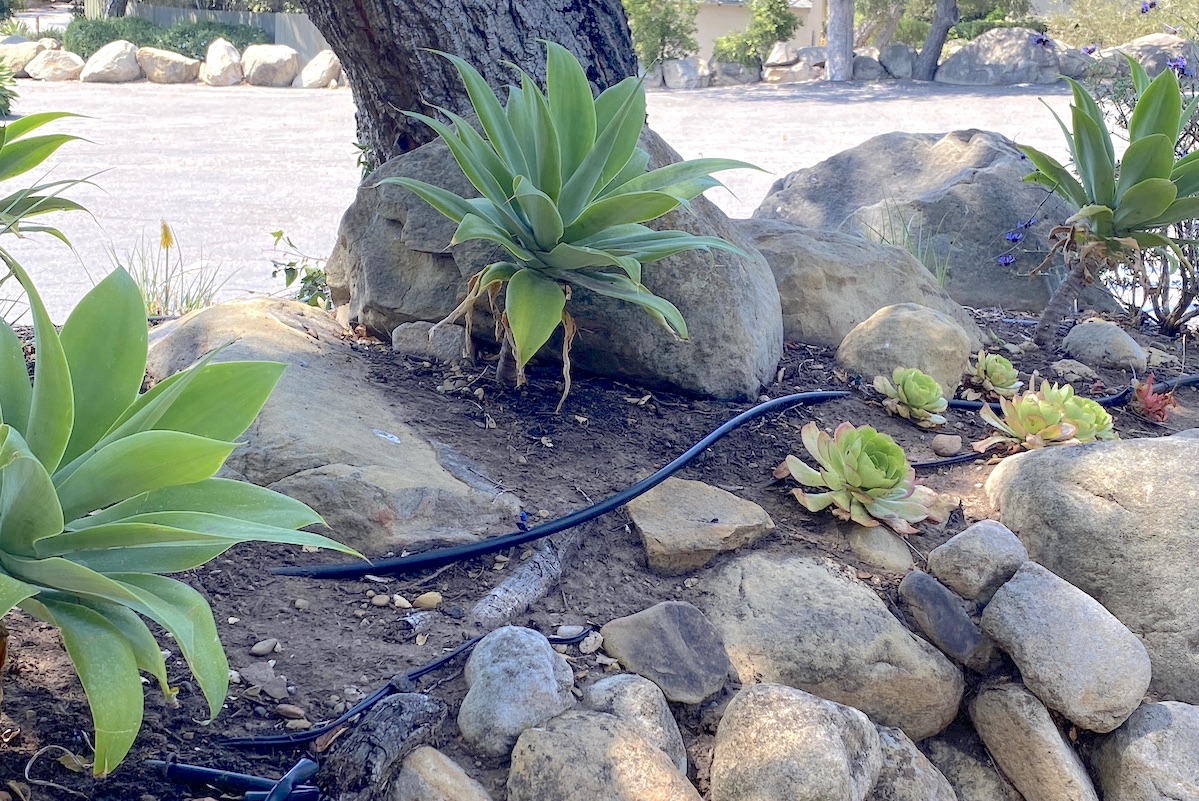
The only thing that would make this drip tube more obvious would be if it were white.
It's mostly a matter of aesthetics, but unconcealed pipes, drip lines, utility boxes, tools---anything utilitarian---detracts from the look of a garden. Because the most prominent color is white, irrigation risers really stand out. I spray-paint mine khaki-green or brown. All this spot needs is a topdressing of gravel, mullch, or the oak leaves the gardener removed with a noisy blower (!)
Not bothering with seasonal maintenance
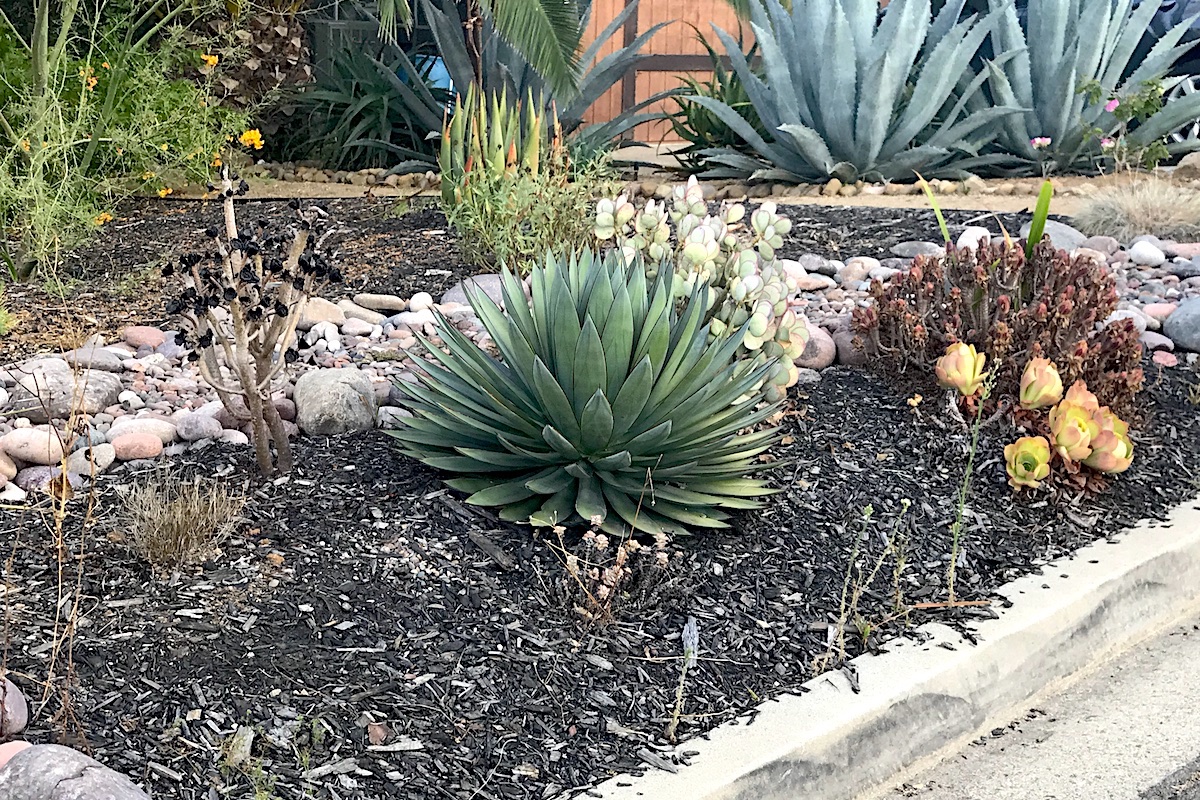
This garden needs routine maintenance to look good again.
Succulents, like all living things, grow. Three or four times a year, a succulent garden needs pruning, weeding and controlling pests. Gaps need filling and leggy succulents need cutting back and replanting. The garden above looks like it may need the irrigation checked, and would certainly benefit from replacing ratty-looking bark with crushed rock. [Learn more: Succulent Garden Maintenance, Part One: Tasks and Succulent Garden Maintenance, Part Two: Referrals]
Not knowing how big plants get
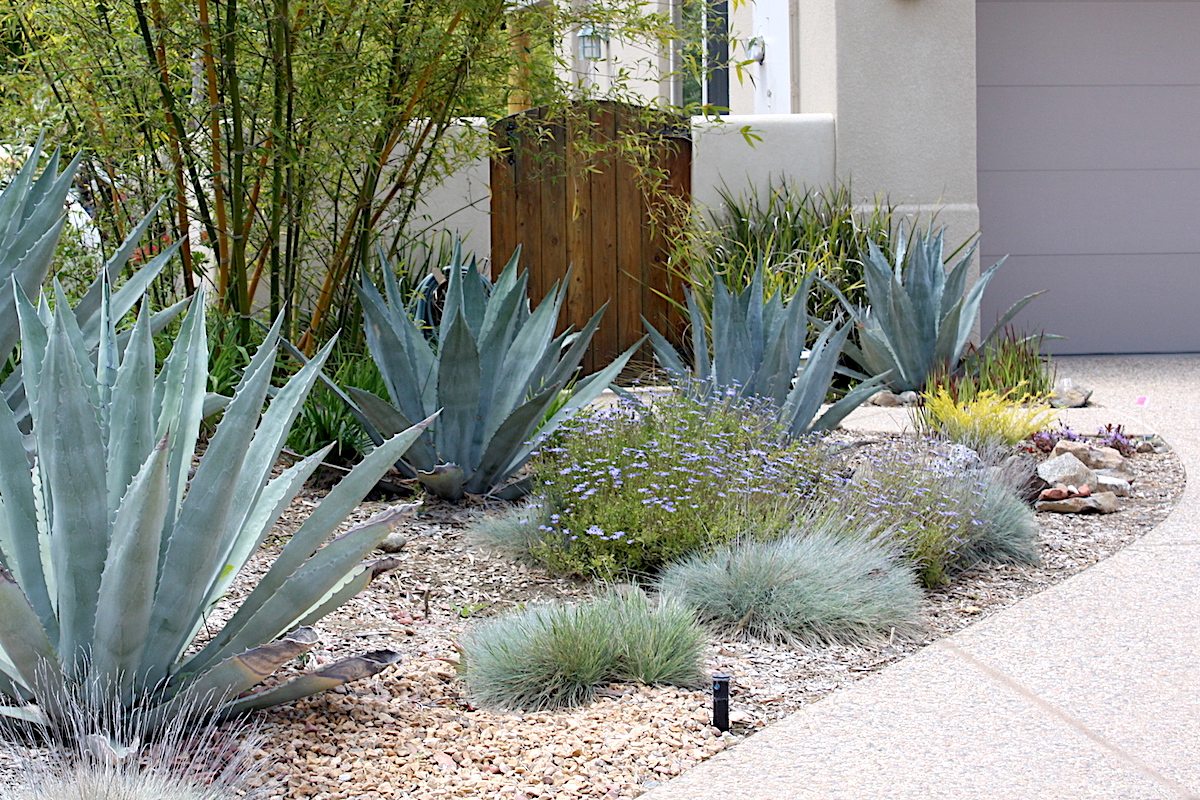
These Agave americana (century plants) look great but will eventually triple in size.
I see it all the time: Agave americana planted too close to a curb, walkway, steps or driveway. Century plants get as big as Volkswagens. Because pups are plentiful and often free doesn't mean they belong in your garden. What to do? Remove misplaced century plants and any offsets before they get any bigger (which they will). [Learn more on my YouTube channel and in my book Designing with Succulents (2nd ed).]
Pruning agaves badly
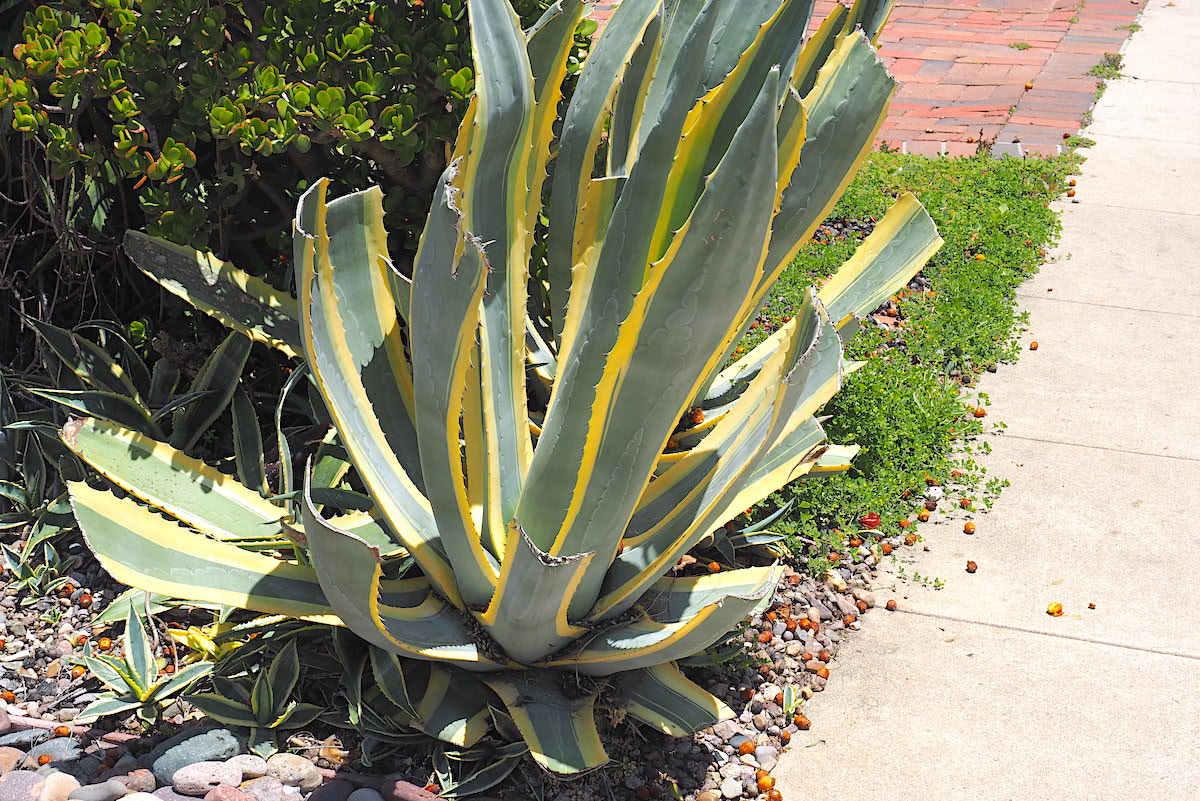
To preserve the plant's beauty and symmetry, agave leaves should be pruned all the way back to the stem. Avoid chopping them off midway.
This Agave americana 'Marginata' pup probably looked good for a couple of years, but eventually its pointed, fanged leaves threatened passersby. So it got chopped, which ruined the plant's appearance and only briefly solved the problem. [Find someone who can do it for you.]
Not controlling agave snout weevil
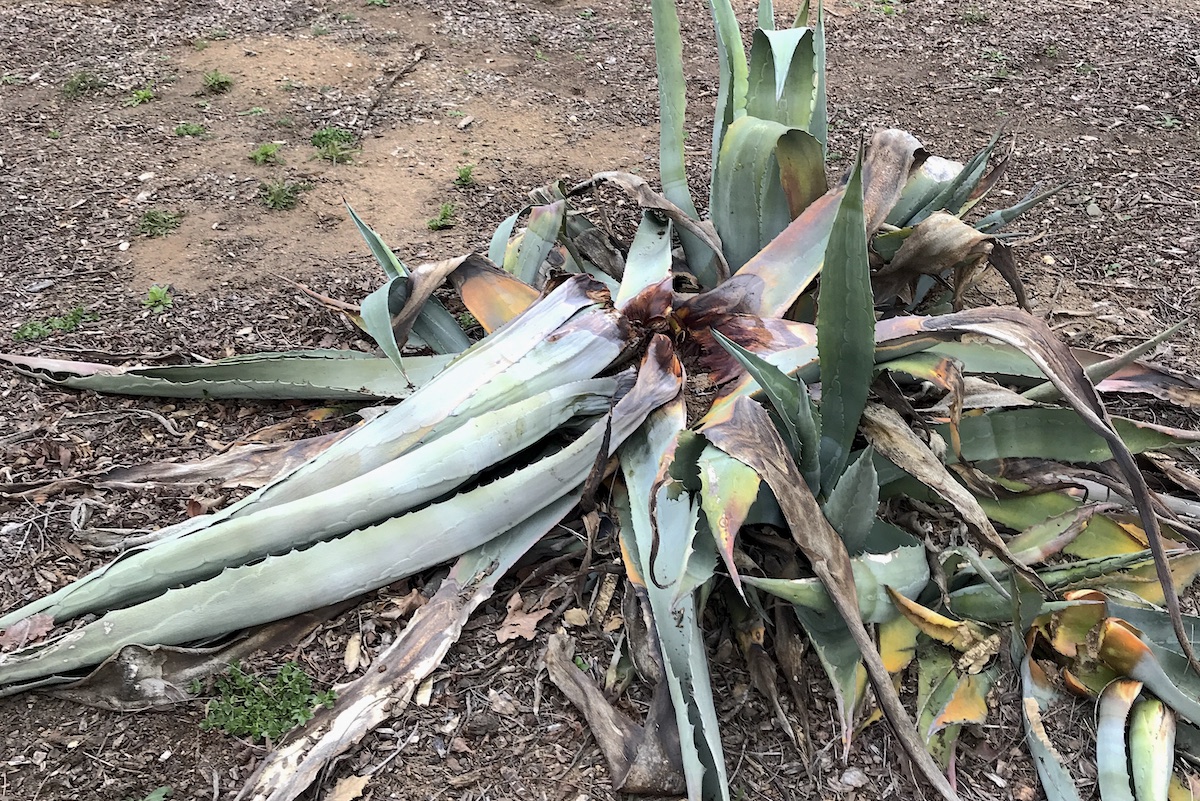
Agave showing snout weevil damage
The agave snout-nosed weevil is a half-inch-long black beetle with a downward-curving proboscis that enables it to pierce an agave’s core, where it lays its eggs. Grubs hatch, consume the agave’s heart, then burrow into the soil to pupate.
Once prevalent only in desert regions and Mexico, the weevil is spreading rapidly throughout the US and abroad, earning it the dubious distinction of being one of the "Top 100 Worst Global Invasive Species." So get it before it gets you! [Go to my agave snout weevil prevention page.]
Growing Eve's needle

Can you imagine a worse place for a cholla?
Eve's needle (Austrocylindropuntia subulata) nearly put my hairdresser out of business. She was pruning an overgrown patch of it and got a spine under a fingernail. The hooked barb required surgical removal, and the healing process was long and painful. Unfortunately, this lush cholla is becoming common in Southern CA gardens. It roots readily from cuttings, grows fast, and gets 10+ feet tall. When top-heavy, it falls over, breaks apart, and creates its own cuttings. The plant's needle-like spines are a threat to passersby, dogs, and kids who careen into it. I loathe it. [Watch my Instagram video.]
Letting garden pots get waterlogged
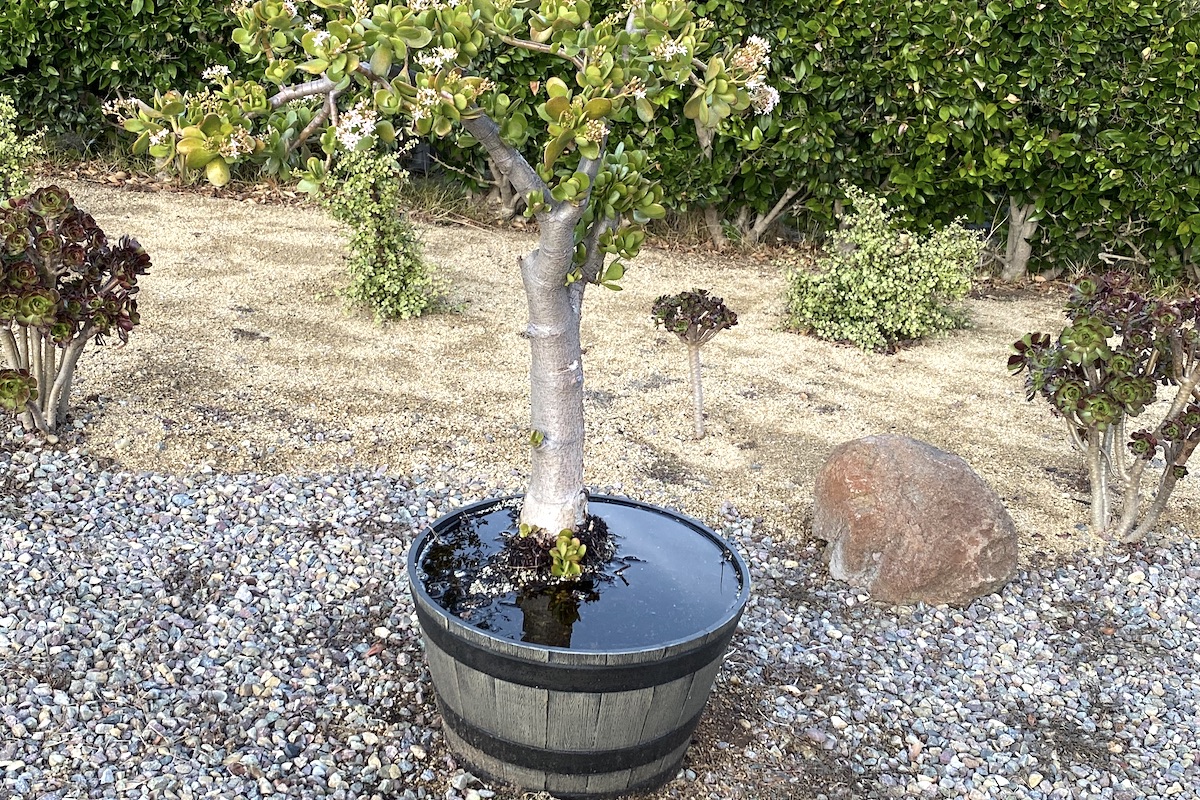
Waterlogged jade plant
Potted succulents that sit atop soil can become waterlogged due to plugged drain holes, causing roots to rot. Prevent this by setting garden pots atop paving stones.
Ironically, the jade plant in the photo survived standing water, only to fall victim of our next don't-do:
Exposing vulnerable succulents to frost
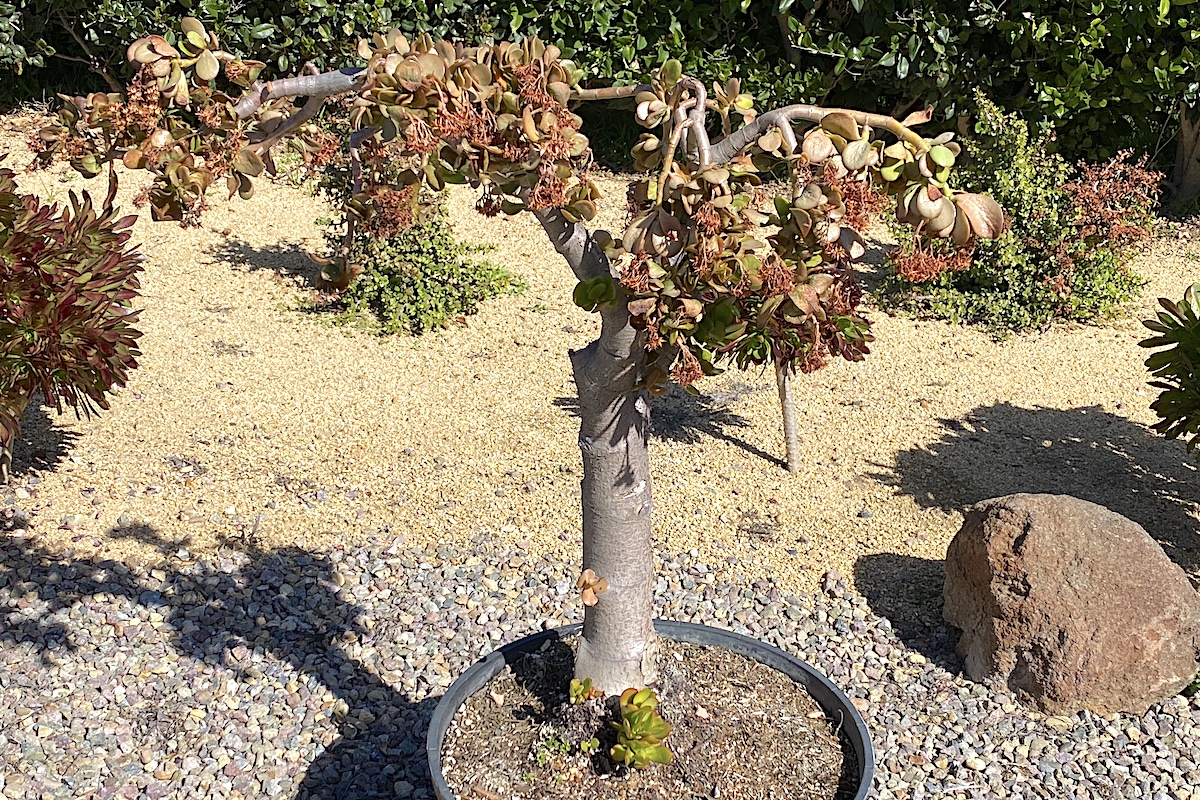
Frost-burned jade
Jade (Crassula ovata) is resilient, often the last plant standing in a neglected garden. Despite being one of the easiest succulents to grow, it does have an Achilles heel: Frost. When temps are forecast to drop to 32 degrees F, throw a sheet over jades exposed to open sky. Better yet, don't plant one in a vulnerable location in the first place. (Apologies to my next-door neighbors.) [See: Frost and Succulents, What You Need to Know.]
Not topdressing bare dirt
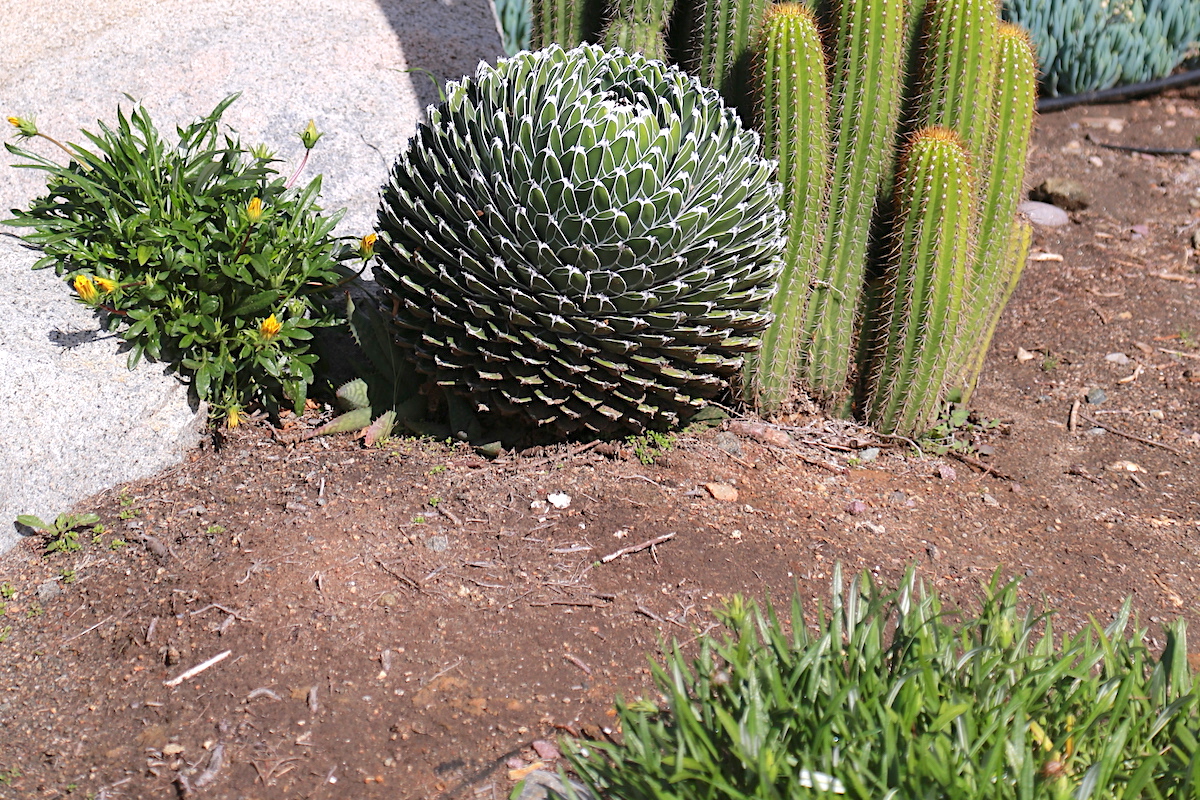
Exposed soil benefits both practically and aesthetically from topdressing
Succulent gardens and pots look better and plants benefit if you cover bare soil with gravel or pebbles. In addition to aesthetics, topdressing slows moisture evaporation, moderates soil temperature, diffuses rain, helps prevent weeds from sprouting (and make them easier to pull if they do), and conceals utilitarian items, like pipes. [Learn more about top dressing for succulent pots and gardens.]
Not acclimating new plants
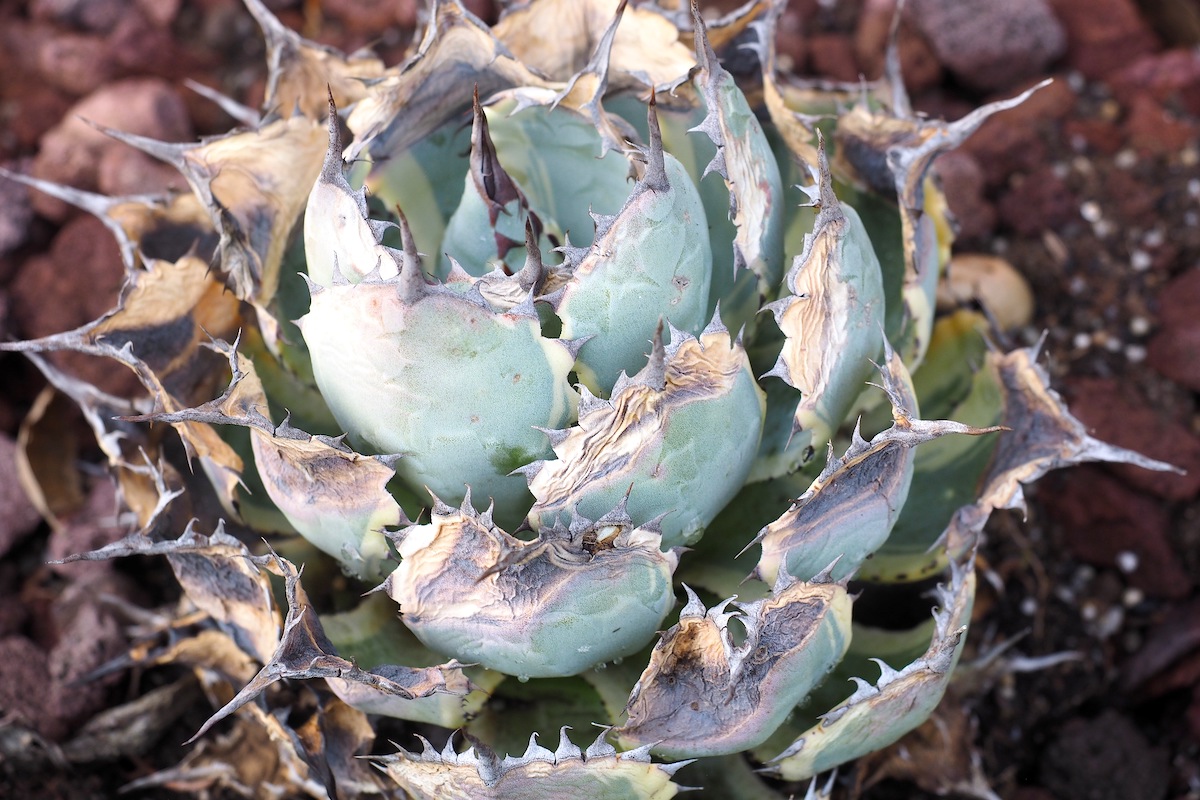
Sunburned agave
If your newly acquired succulent was under shade cloth at the nursery or in a greenhouse, don't immediately set it in full sun. It may sunburn, and the resulting beige patches won't heal. Introduce new plants to greater sun gradually. [Learn more about sun and succulents.]
Giving succulents too little sunlight
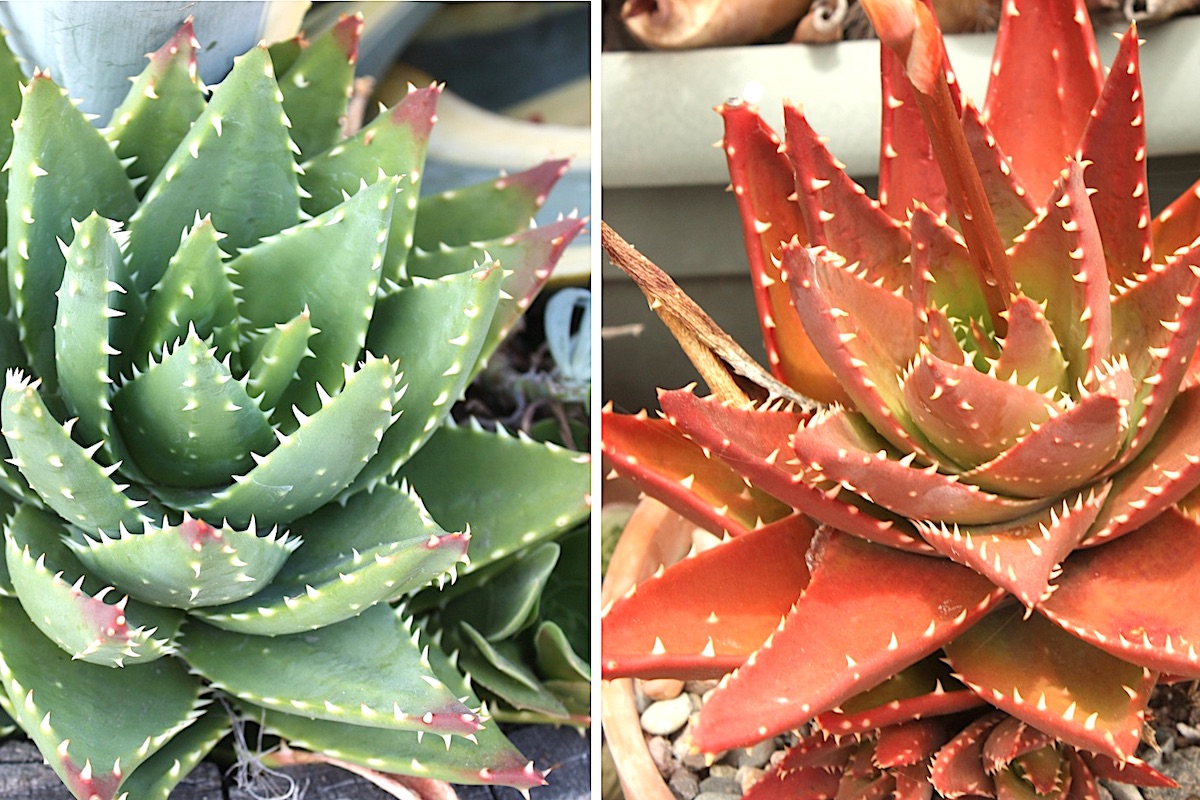
Aloe nobilis, low light (left) vs full sun (right)
Put a red- or orange-leaved succulent in the shade, and it'll revert to green. The plant will be OK, but you may be disappointed. This is especially noticeable with aloes, crassulas, echeverias and kalanchoes. Sun is essential for color...and for flowering as well. [See: How Much Light Do Succulents Need?]
Not treating pests early
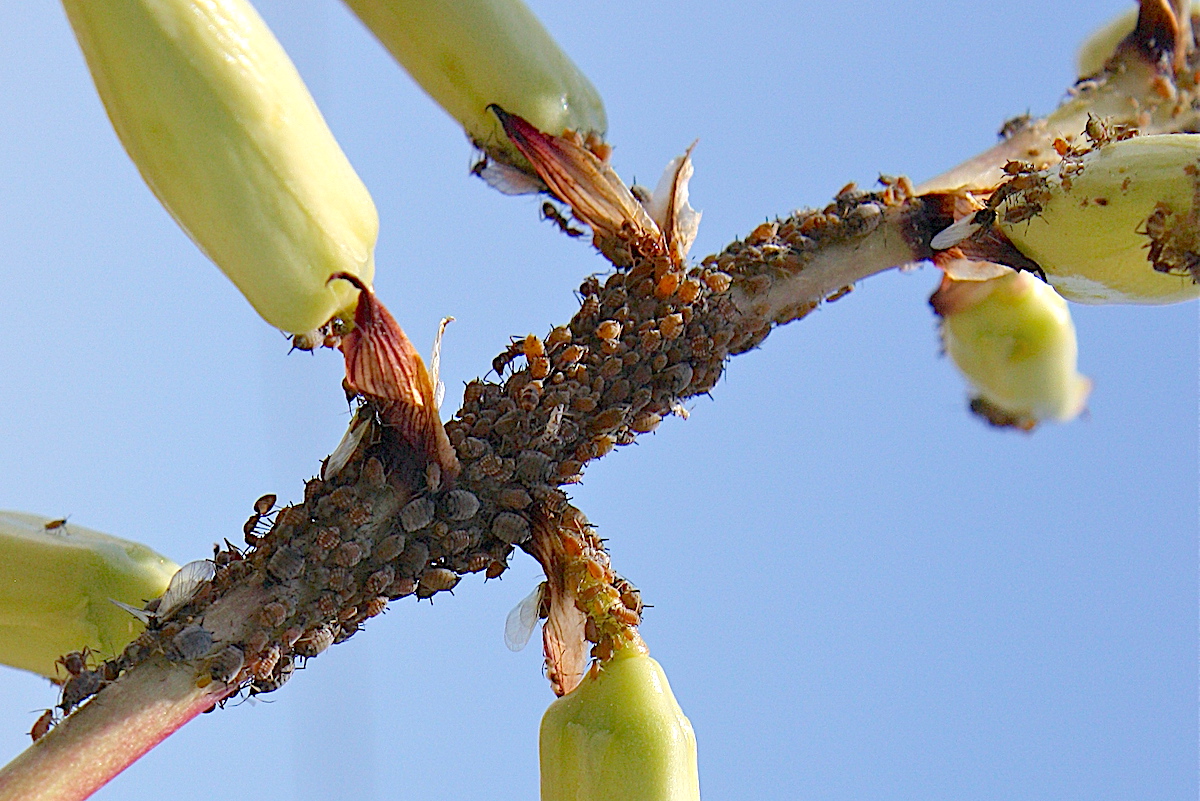
Aphids infest a succulent flower stalk
Suddenly bugs are everywhere, especially on new growth and flower spikes, or on potted succulents crammed together. Check leaf axils for white bits (mealy bugs) and buds for aphids. Spray pests with Isopropyl alcohol (70%). [More info: Go to this site's Pests, Diseases and Problems page and also the "Pest and Damage Control" section of Designing with Succulents (2nd ed), pp. 137-143]
Assuming you don't have snails

Snails chew permanent, unsightly holes in leaves
Snails are tiny in early spring, but by summer they're big enough to do serious damage. Snails chew holes in succulent leaves, so bait early! I use Sluggo because it's environmentally friendly and affects only snails and slugs (but not beneficials).
Ignoring glochids
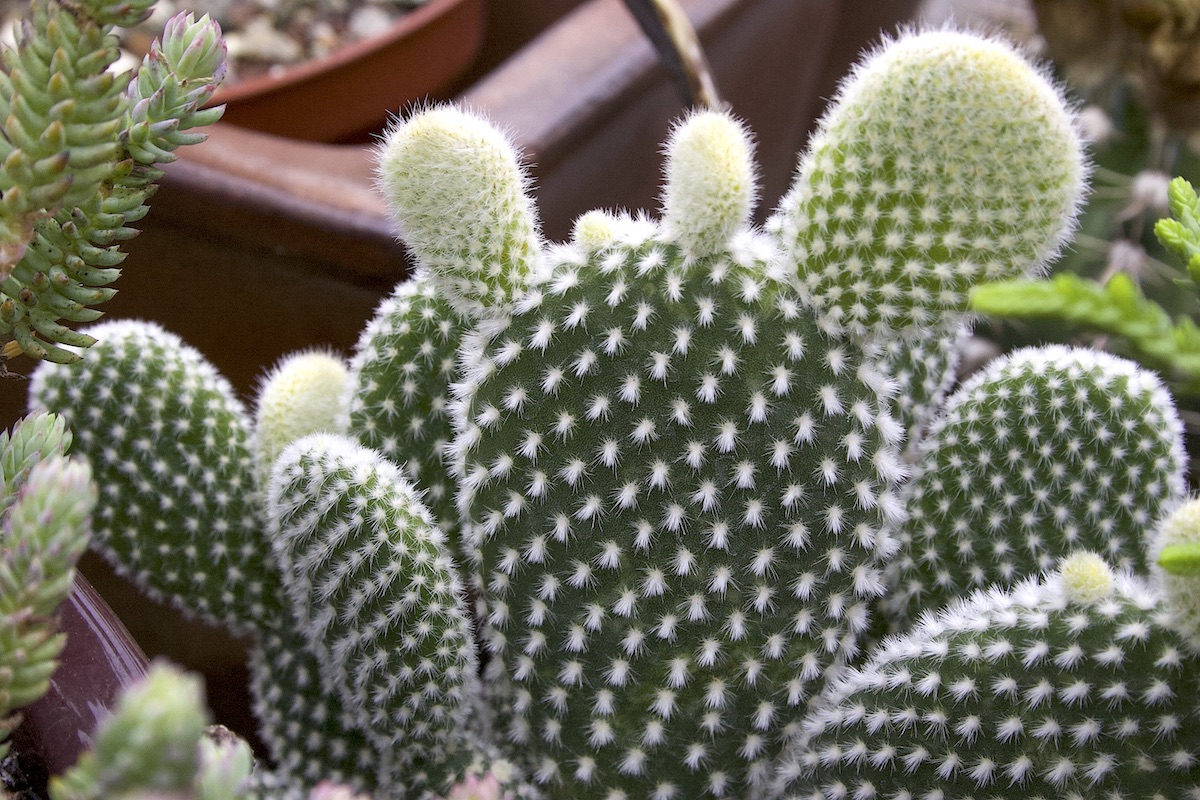
Bunny ears (Opuntia microdaysis) is deceptively fluffy
Opuntia (paddle cacti, prickly pear) typically have spines you can see plus glochids ("glock-ids")---hairlike, hooked ones you almost can't. With the slightest touch, glochids detach from the plant and imbed skin. Bunny ears (Opuntia microdasys) is polka-dotted with glochids. Despite its cute name, this is definitely NOT a plant for children nor Easter baskets.
Not treating cochineal scale
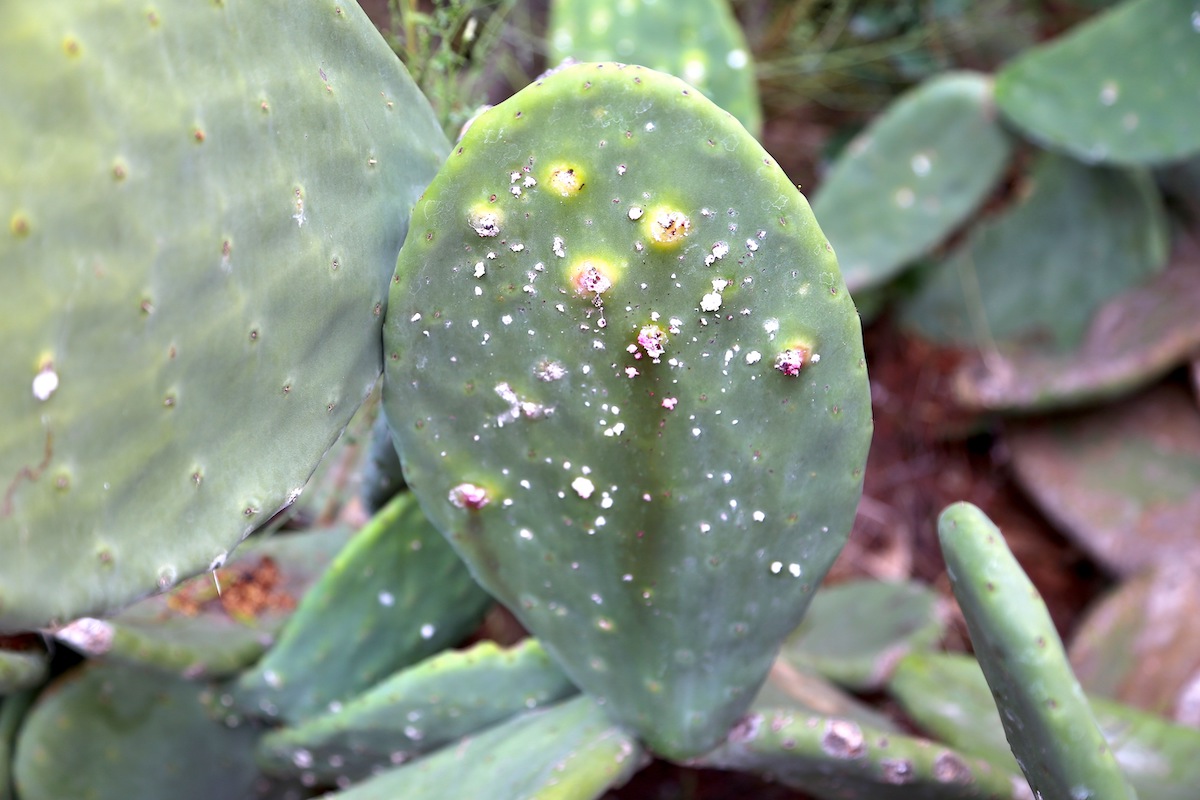
Cochineal scale on paddle cactus
Opuntia is arguably the easiest succulent to grow, needing no water other than rainfall and tolerating poor soil, high heat and frost. However, pads tend to get infested with cochineal (ko-CHIN-ee-al) scale, which compromises the appearance and health of the plants. Scrub off scale two or three times a year, using a soft-bristled, long-handled brush dipped in a solution of horticultural soap such as Safer. [See Cochineal Scale on Paddle Cactus: What to do.]
Installing a dry stream bed above ground
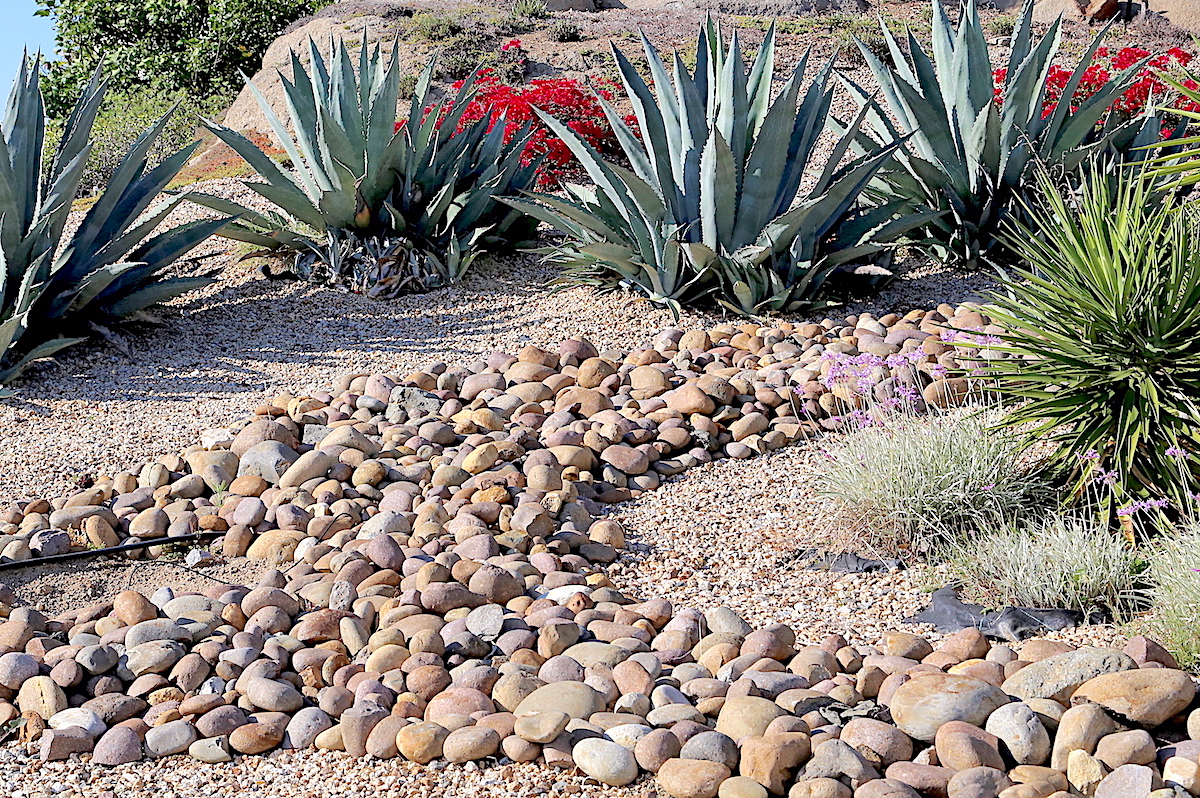
Imagine if those rounded rocks were below grade. Makes a big difference, doesn't it?
This is a surprisingly common aesthetic error: After having a load of rounded river rock delivered, homeowners make them "flow" atop of the ground... never mind that this never happens in nature. Sure, water flows atop soil, but (have you noticed?) rocks never do. A stream bed in nature is always lower than surrounding terrain...often significantly so. So, dig a swale first! [See: A Colorful Succulent Garden to Copy.]
Not knowing a succulent's origins

Succulents from the desert Southwest have different growing requirements than those from South Africa
You may not be able to provide your cacti with a desert climate, but understanding that the plants come from a dry, hot, sunny region with cold winter nights will go a long way to making them---and you---happy. The secret to growing any succulent successfully (any plant for that matter) is to try to replicate its native habitat. [Learn more in my books.]
Note: My previous article, "A Dozen Beginners' Succulent Landscape Mistakes" has twelve more not included here.
Related Info on this Site
A Dozen Beginners’ Succulent Landscape Mistakes
As a succulent garden consultant, I often see these dozen common landscaping mistakes made by well-intended homeowners. Correcting them makes a big difference aesthetically. Do any apply to you? If not, applause!
How Much Light Do Succulents Need?
How much light do your succulents need? It depends on the type of plant and where you live. Most haworthias and gasterias prefer shade but can handle some sun along the coast. Many but not all cacti are fine in full desert sun. As a general rule, the majority of soft-leaved succulents want half a day’s sun (in mild climates) and dappled or “bright” shade.
Cochineal Scale on Paddle Cactus, What To Do
White fuzzy lumps on paddle cactus are cochineal (coach-en-ee-al) scale, a parasite that pierces the plant’s skin and consumes its juices. It’s used to make carmine dye.
The post Succulent Mistakes and Solutions appeared first on Debra Lee Baldwin. Copyright © Debra Lee Baldwin.
from Debra Lee Baldwin https://ift.tt/urQY4iy
via IFTTT


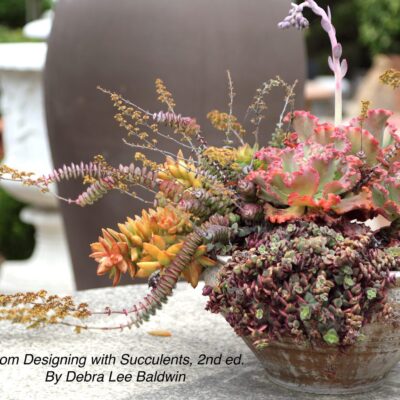
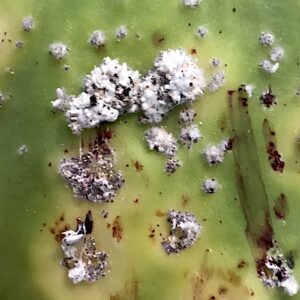
No hay comentarios:
Publicar un comentario